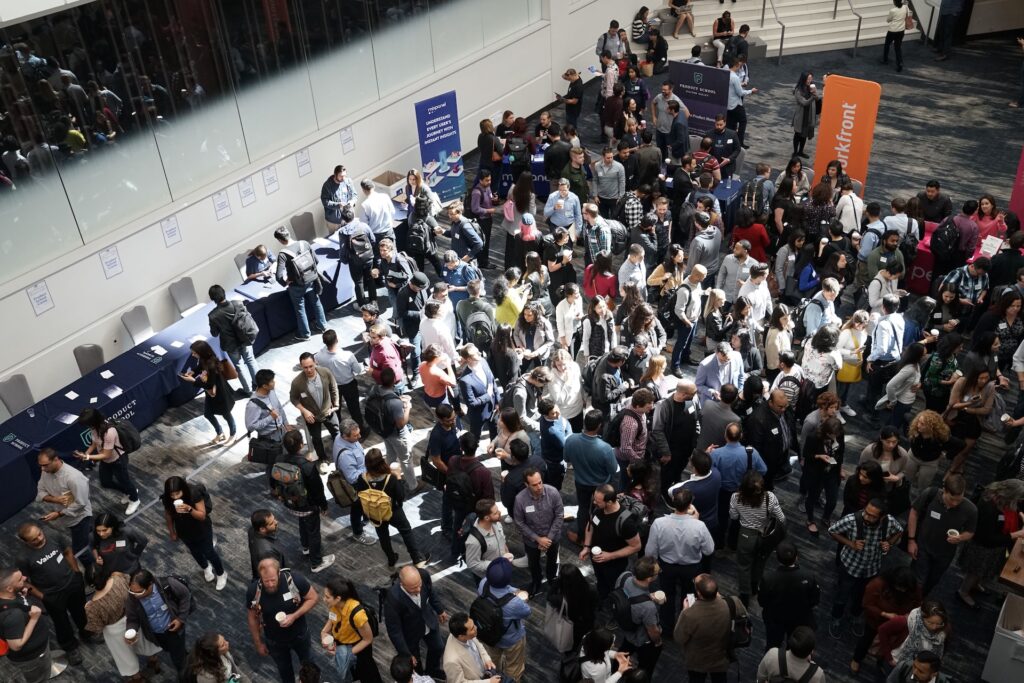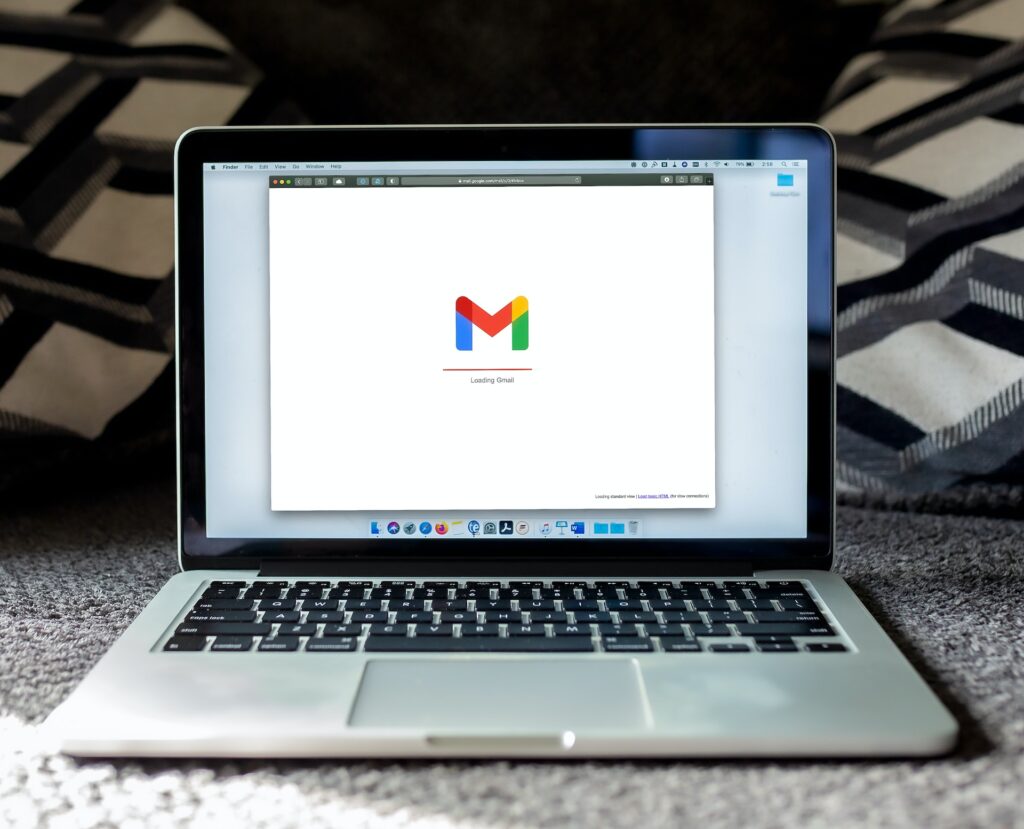After nearly two decades of failed attempts, I finally cracked the code and figured out how to break through at a conference as an introvert without a ton of effort. I connected with most of the people I wanted and sparked meaningful conversation with a solid handful of them.
Up until this point, I had been to numerous conferences and expos both as an attendee and exhibitor, sometimes with a group of colleagues, and other times running solo, and I recently came to a dual realization:
- It’s extremely challenging to break through the clutter at one of these in order to generate a meaningful ROI on your time and money.
- Most people go about attempting to maximize their experience as an attendee in completely the wrong way.
In Fall of 2022, Mobkoi sponsored a session at New York Advertising Week, and along with that, my colleagues and I got complimentary passes. Of course I wanted to learn from the speakers, but I was really there to network.

It had been a while since my last conference, Tales of the Cocktail 2018 in NOLA during my Esquire tenure. I had met a ton of marketers while at “Tales”, but the circumstances were different; I had an editor in tow. And it’s so much easier to meet client-side marketers when you’re with someone who might feature them in an upcoming article.
This time with Mobkoi, we had no editors, and I knew that in this case, it was going to be challenging to schedule any meetings. In fact, I didn’t schedule any.
Ever since my first conference experience, the Bar & Restaurant Expo in Vegas during my time running BlackBook’s restaurant and nightlife guide, I’ve had mixed feelings about the value of these such events.
On the surface, they seem like a great place to make connections, meet decision-makers and grow my business. Over the years, I’ve attended CES, Project and Magic, Tales of the Cocktail, New York Social Media Week, and Advertising Week to name a few.
Each is unique in their own right, but all are essentially different flavors of the same thing—Get a lot of people together from the same industry, put a loose structure of events together and spin it as a “must-go supercharger”.
After so many of these under my belt, I realized the only people getting any sort of supercharge were those throwing the events and making thousands or millions of dollars from sponsors, vendors, and attendees.
As a paid sponsor or a vendor, you’re paying for additional exposure or a booth, and through that, you’re guaranteed to get some level of interaction with decision-makers. Is the cost worth it? Maybe so, and maybe not, but that’s a far more challenging question to answer and a topic for another day.

As an attendee, however, you are one of thousands or even tens of thousands of sheep herding through stanchions. Is it possible to break through in a meaningful way? I believe the answer to be a resounding ‘yes’, and unpacking that will be focus of this post. What’s the best way to make meaningful interactions at a busy conference as a lowly attendee? Let’s explore that with an “easy conference hack” (because everyone loves a good “hack” these days, amirite?!).
First, to provide some context, let’s unpack what most people do.
From my experience, most conference attendees choose one of two “strategies” to make the most of their experience.
Option 1) Nothing (aka, hope for serendipity)

It’s like winning the lotto. Most people that I spoke with in writing this article don’t have any real strategy. They definitely want to meet people—both attendees and speakers—but they don’t really think about what would be the best way to actually make that happen. Their strategy (and mine, as well, up until this point) is to “hope and pray” they run into a speaker in the cafeteria or while washing their hands in the restroom.
Obviously, hope is not a strategy. But what happens if, by some miracle, you do run into that special speaker in the condiment line at the burger bar? What then? What would you say to that person? How much time do you actually have to grab their attention and spark their interest in a tangible way? Not much. The odds of this working out for you in a meaningful way are not much greater than zero.
Side note, I am fully aware of the irony surrounding the fact that a bunch of marketers don’t know how to market themselves in critical situations, but I digress…
Option 2) “Aggro meet” speakers after the panel

This is the other “strategy” I’ve seen out in the wild. You’ve got those “Alpha Dog” sellers who simply try to bum-rush the speaker as soon as the session ends.
You’ll see this without fail at nearly every panel. To compound the inherent flaw with this method, it’s not like someone implementing this “brilliant” strategy is ever the only one with this idea. The ego that some people have in thinking that, low and behold, they are going to be the one person whose interest was piqued “just so” to warrant a post-panel discussion with a panelist.
These people always end up being one of the mob, and depending on the size of the audience, there can be dozens of them rushing the stage.
Imagine now for a moment, that you were the speaker, and as soon as you’re done being fully “on” for 30+ minutes, speaking in front of a huge crowd of strangers, a mob of value-suckers who are trying to “take something” from you rush the stage. You just want to leave and pee and not talk to anyone for a hot-minute to collect your thoughts and decompress. Now you’re being assaulted by a gang of Alpha Dogs vying for your attention, waving business cards and trying to sell you something.
Even if someone’s proposition was actually interesting, is the speaker really in the right frame of mind in this moment to receive it?
Shit no. You just want to get out and move on with your day.
Much like “hope and pray”, the “aggro meet” method is sub-par at best.
So with those two sub-par strategies out of the way, this brings us to this past Advertising Week and the new tactic I employed that amazed me in both its simplicity and effectiveness.
Here’s what I did:
Step 1) Sign up to sessions

Sign up to view panels, keynotes and fireside chats with specific speakers that you’re hoping to connect with.
Step 2) Capture content

As you’re watching it go down, take a photo/short-video of the speakers. It doesn’t even need to be a good clip or pic, but bonus points if you can get your intended contact looking fly AF.
Note: This still works if you’re a virtual attendee streaming this as well. Simply screen-shot the livestream.
Step 3) Take good notes

Not only is this helpful for you to remember what was said, but this will enable you to distill everything that was just conveyed into its most important points.
As you take these notes, don’t just jot down every interesting point, but actively listen for something novel and interesting. Keep an ear out for what you feel is the single most insightful comment your prospect makes.
Do this by writing down everything they say that sounds even moderately special. Then after the panel ends, check your notes for the most unique piece.
Step 4) Post it on Linkedin

You’re then going to write a post on Linkedin with a quote from the speaker tied to that “most interesting piece”, add in a few sentences of your own commentary, and pair it with the photo or video you took.
In this post, you’re going to Tag the conference itself, the sponsors of that panel, and all of the speakers, including your target.
The above action in and of itself is going to do wonders. Everyone tagged will get a Linkedin alert that they were mentioned, and you’ll find that many, if not all will Like and/or Comment on your post. (Nice!)
The more Likes and Comments the post gets, the better the Linkedin algorithm will treat it, and the post has the potential to snowball. I find that my worst-performing of these posts will still get a few hundred impressions, and the best will get into the thousands.
Step 5) Email your prospect a link to the post

Finally, you’ll want to email the speaker whom you were trying to make contact with in the first place.
Send them two to three sentences saying how much you appreciate them and that one “amazing” point they made about XYZ. Hyperlink your email to your Linkedin post, share that you work for “Company ABC”, and let them know that you would love to chat with them or a member of their team whenever the time is right.
The first time I tried this, I got about a 30% response rate, which was way more than I ever expected.
If you don’t know your prospect’s email address, check out this post I wrote a little while back about how to get it.
Why does this strategy work? Well, unlike the value-sucking Alpha Dog rushing the stage with a business card after the panel, this method actually adds value by publicly praising your target, raising awareness of their expertise and experience, and increasing their social status within the underrated Linkedin universe.
Anything else?

Lastly, just because you’re taking this “new and improved” approach to navigating conferences, you should still try to play this the “old fashioned way” and meet anyone you can.
Now that you’re no longer pressured to meet people to feel like you “got something” worthwhile from attending, you’ll be surprised to find that you end up meeting people more easily. So, go ahead and chat up that person next to you in line at the coffee bar or waiting to enter a panel
While I noted earlier that this is not an effective primary strategy for making the most of a conference, it is still a nice way to “round out” your experience.
The key thing here to do this well is simply to say “hi” to as many people as you can, no matter who they are, and strike up a conversation.
I find it makes it even easier when you keep an eye out for people you “know”. This doesn’t necessarily mean your “friends” in the industry; just people who you’ve had meetings with in the past or spoken with at other such events. People are rarely wandering alone, and that one person you know will likely introduce you to the other people they are with.
And of course you’ll be sure to get everyone’s name, and at the very least, add them on Linkedin.
In Summary
It’s easier to break through at a conference than it might seem as long as you have the right strategy. Take photos and notes at panel discussions so you can write a Linkedin post about that talk and Tag all relevant parties. Then email everyone from that panel whom you’d like to meet with a link to the post. This will put you in a position to add value for your target connections instead of taking it like everyone else.
Round out your experience by trying to meet as many people as possible when not in a panel.

Leave a Reply